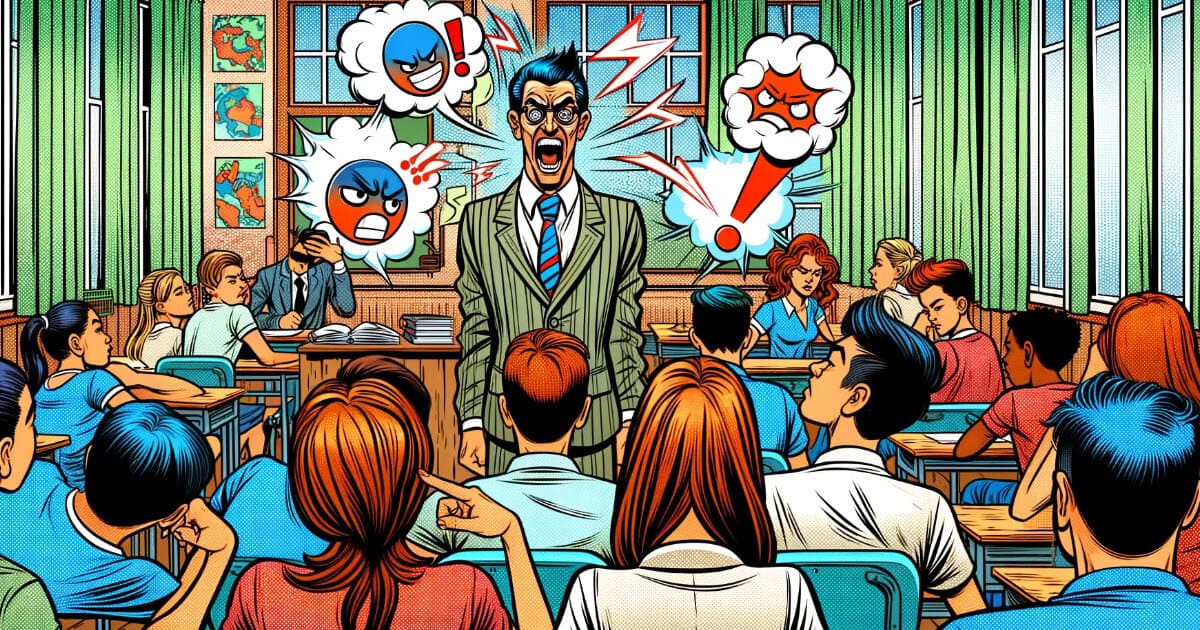5 Warning Signs of an Ineffective Teacher
Recognizing a problem is the first step towards fixing it. This holds particularly true in the realm of education, where the effectiveness of a teacher can significantly shape a student’s academic journey and future. But how can you tell if a teacher’s approach is hindering rather than helping? Let’s delve into the warning signs of an ineffective teacher, focusing on factors directly impacting your or your child’s learning experience.
1. Poor Classroom Management
What does it look like? Imagine walking into a classroom where the noise level often drowns out the teacher’s voice, where students seem confused about assignments, and where rules change unpredictably. This is a classic sign of poor classroom management. Effective classroom management involves clear rules, consistent enforcement, and a structured environment that enhances learning.
- Lack of control and frequent disruptions
- Inconsistent rules leading to confusion and lack of respect
- A noticeable decline in student engagement and participation
Why it matters: Classroom management directly affects how much students can learn from their lessons. In a chaotic classroom, students are more likely to feel unmotivated and less likely to absorb the material, leading to low student engagement and poor educational outcomes.
2. Lack of Subject Knowledge
Teachers are expected to be subject-matter experts. When a teacher consistently fumbles over details or cannot adequately answer student questions, it reveals a troubling gap in their knowledge. This is not just about missing a few facts; it’s about a fundamental inability to effectively guide students through the learning process.
- Reliance on textbook answers without providing deeper insights
- Difficulty in explaining concepts clearly or answering questions
- Use of outdated or incorrect information
A teacher’s strong grasp of the subject is crucial for inspiring confidence and curiosity in students. Without it, students risk learning incorrect information and developing a skewed understanding of the subject, affecting their educational outcomes.
3. Unengaging Lessons
If you’ve ever sat through a lecture where the teacher droned on and found your mind wandering, you’ve experienced an unengaging lesson. Engaging teaching involves interaction, discussion, practical examples, and connecting to the students’ lives and interests.
- Lectures that lack interaction or practical application
- Materials that do not vary in format, such as constant worksheets
- No adaptation of materials to meet diverse learning styles or interests
Impact on Students: Unengaging content can lead to disinterest and disengagement, making it difficult for students to retain information. This often results in unmotivated students who are less likely to succeed academically and may develop a negative attitude toward learning.
Understanding these issues makes it easier to spot the signs and advocate for necessary changes in your or your child’s education. Recognizing the warning signs of ineffective teaching is crucial for ensuring that education serves its purpose well—fostering knowledge, curiosity, and a love for learning.
4. Negative Attitude Towards Students
Teachers are pivotal in shaping the atmosphere of their classrooms. When they exhibit a negative attitude towards students—through sarcasm, impatience, or outright dismissiveness—it can create a toxic learning environment. These behaviors can demoralize students, leading to decreased motivation and self-esteem.
- Manifestations of favoritism or unfair treatment toward sure students
- Comments that demean or belittle students’ efforts and abilities
Such negativity not only impairs student learning but also their emotional well-being. Educators must maintain a supportive and encouraging demeanor, which fosters a positive learning environment and boosts student morale.
5. Inconsistent Grading
Consistency in grading is fundamental to fairness in education. An ineffective teacher often displays grading inconsistencies, confusion, and student frustration. These inconsistencies might manifest as unexplained grade variations or feedback not aligning with the grades awarded.
- Grading that varies significantly between similar assignments
- Feedback on student work that is vague or non-specific
This lack of consistency can undermine trust in the educational process and affect students’ motivation to improve. Ensuring fair and consistent grading is essential for maintaining student trust and encouraging academic honesty and effort.
The Power of Recognition
Identifying these signs in a teacher’s approach can be the catalyst for enhancing the educational experience. Just as understanding the elements of effective teaching can empower students and parents to demand quality education, recognizing the pitfalls of ineffective teaching is equally critical. It prompts necessary conversations and actions that can significantly improve teaching methods and student outcomes.
Education should be a dynamic interaction that enriches students’ lives, encouraging them to engage deeply with the world around them. Effective educators are key to this mission, and they thrive in environments that support their continuous learning and adaptation to student needs.
Questions to Consider
As you reflect on the quality of education, whether it’s your own or that of someone you care about, consider these questions:
- How do the teacher’s communication skills impact the classroom atmosphere and student learning?
- What steps can be taken to foster more engaging and interactive lessons catering to various learning styles?
- How can students and parents constructively address concerns about teaching effectiveness with school administrators?
By engaging with these queries, you can better understand what actions might be necessary to cultivate a more effective and inspiring educational environment.


